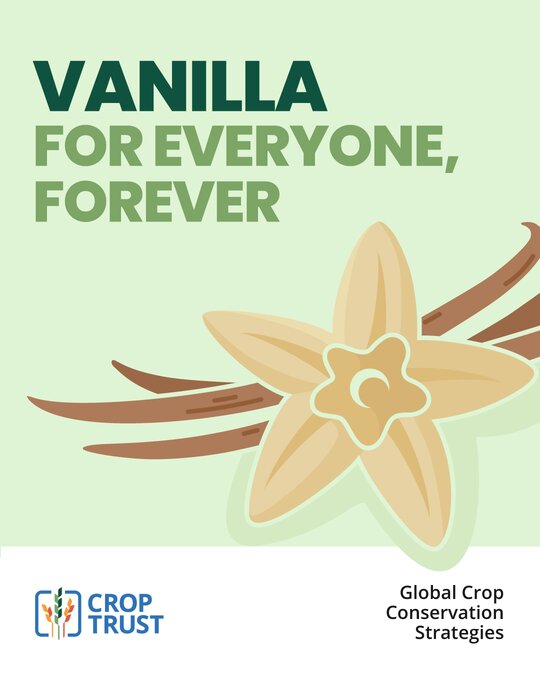Baking enthusiasts everywhere love to talk about vanilla—what type they like, how they use it, and of course, its delicious flavor and aroma.
But the “real” vanilla is under threat.
Vanilla pods are the fruit of orchids in the Vanilla genus, the only group of orchids that produce an economically important fruit. The plant originates from Central and South America, where it was used by the ancient Mayans and Aztecs. It is still produced there, but at a declining rate.
Production has rapidly decreased owing to low market prices and the many constraints on traditional production systems.
As part of the Crop Trust’s mission to safeguard crop diversity in perpetuity, key crops have been chosen for the development of comprehensive strategies to guide and coordinate global efforts for their conservation. Vanilla has been selected because it is an important, high-value crop.
Key Messages
- Only 1% of global vanilla extract is made from vanilla pods, the rest is produced through chemical synthesis of organic compounds
- Vanilla species are threatened by environmental and human factors
- Vanilla conservation in genebanks relies on maintaining live plants in fields or shade houses, rather than as seeds
- 95% of the world’s vanilla crop is derived from Vanilla planifolia which has two flavor profiles: Bourbon vanilla: most popular, creamy, bourbon flavor and spicy aroma; Java vanilla - smoky aroma with hints of chocolate
- Vanilla pods are the fruit of orchids
- Many wild relatives of vanilla are still not conserved in any genebanks

